Maha Shivratri, meaning “The Great Night of Shiva,” is one of the most significant Hindu festivals dedicated to Lord Shiva. Devotees across the world observe fasts, chant prayers, and perform puja to seek blessings from the Supreme Lord. If you want to celebrate Maha Shivratri at home with devotion and proper rituals, this guide will help you conduct the puja step by step.
Significance of Maha Shivratri
Maha Shivratri is observed annually on the 14th day of the dark fortnight (Krishna Paksha) in the month of Phalguna or Magha, as per the Hindu calendar. It is believed that on this day, Lord Shiva performed the cosmic dance, Tandava, and also married Goddess Parvati. Devotees worship Lord Shiva for spiritual growth, success, and liberation from the cycle of birth and death (moksha).
Preparation for Maha Shivratri Puja
Before performing the puja, it is essential to prepare yourself and your home to create a serene environment conducive to worship.
1. Clean the Puja Area
Select a quiet and clean place in your home for the puja.
Clean the area thoroughly and set up an altar with an idol or Shivling.
2. Take a Ritual Bath
It is customary to take an early morning bath to purify the body and mind.
Wear clean and preferably white or saffron clothes.
3. Gather Puja Items
You will need the following items for the puja:
Shivling or an idol of Lord Shiva
Bel Patra (Bilva leaves) – 3 leaves in a cluster are ideal
Milk, honey, curd, ghee, and Ganga Jal for abhishekam (holy bath)
Dhoop, deep (lamp), and agarbatti (incense sticks)
White flowers
Bael fruits, coconut, and seasonal fruits
Panchamrit (a mixture of milk, honey, curd, sugar, and ghee)
Rudraksha mala for chanting
Sandalwood paste and Bhasma (sacred ash)
Naivedyam (sweet offerings like fruits or prasad)
Step-by-Step Maha Shivratri Puja at Home
Follow these steps to perform the Maha Shivratri puja with sincerity and devotion:
1. Sankalp (Taking a Pledge)
Before beginning the puja, sit in front of the Shivling or idol, close your eyes, and take a vow (sankalp) to observe Maha Shivratri with devotion. Pray for Lord Shiva’s blessings and for the well-being of your family.
2. Kalash Sthapana (Setting the Sacred Pot)
Place a Kalash (water-filled copper pot) near the Shivling and place mango leaves and a coconut on top. This symbolizes divine energy.
3. Abhishekam (Holy Bath of Shivling)
The abhishekam (sacred bath) of the Shivling is the most significant ritual of Maha Shivratri. Perform abhishekam using the following items in sequence:
Water (preferably from the Ganges) – Cleanses the Shivling.
Milk – Represents purity and devotion.
Honey – Symbolizes sweetness and love.
Curd – Ensures good health and prosperity.
Ghee – Signifies victory and power.
Panchamrit – A mixture of all five ingredients to offer the ultimate sanctity.
Bhasma (Sacred Ash) – Represents the cycle of life and death.
Bel Patra (Bilva Leaves) – Offers immense spiritual benefits and is dear to Lord Shiva.
4. Offer Flowers, Fruits, and Naivedyam
After abhishekam, wipe the Shivling and apply sandalwood paste. Offer white flowers, bael leaves, and fruits like bananas, coconut, and prasad.
5. Light a Lamp and Incense
Light a diya (lamp) with ghee or sesame oil and incense sticks. This symbolizes dispelling darkness and invoking divine presence.
6. Chant Mantras and Stotras
Chanting sacred mantras and stotras enhances the spiritual vibrations. Some important chants include:
“Om Namah Shivaya” – The most powerful mantra for Lord Shiva.
“Maha Mrityunjaya Mantra” – For protection and well-being: “Om Tryambakam Yajamahe Sugandhim Pushtivardhanam Urvarukamiva Bandhanan Mrityor Mukshiya Maamritat”
“Shiv Chalisa” – A devotional hymn dedicated to Lord Shiva.
7. Perform Aarti
Performing the Shiva Aarti is an important part of the puja. Light camphor and wave it in front of the deity while singing the aarti.
8. Meditation and Prayer
After the aarti, sit in meditation for a few minutes, focusing on Lord Shiva. Offer heartfelt prayers for health, prosperity, and peace.
9. Parana (Breaking the Fast)
If you are fasting on Maha Shivratri, you can break your fast after completing the night vigil and offering prayers in the morning. Traditionally, a simple sattvic meal is consumed.
Maha Shivratri Fasting Rules
Many devotees observe a strict fast on Maha Shivratri, while others follow a partial fast. Here are some fasting guidelines:
Complete Fast: No food or water is consumed until the next morning.
Partial Fast: Fruits, milk, and non-grain foods like sabudana khichdi are allowed.
No Onion, Garlic, or Non-Vegetarian Food: Only pure vegetarian and sattvic food should be consumed.
Stay Awake (Jagran): Devotees spend the night chanting, meditating, and listening to Shiva Katha.
FAQs on Maha Shivratri Puja at Home
1. Can I perform Maha Shivratri puja without a Shivling? Yes, you can worship a picture or idol of Lord Shiva if a Shivling is unavailable.
2. What is the best time to perform the puja? The puja is ideally performed during Nishita Kaal (midnight) or any prahar (four segments of the night).
3. Can women observe Maha Shivratri fast? Yes, women can observe the fast and perform the puja with devotion.
4. Can I do puja if I am unable to fast? Yes, fasting is optional. You can still perform the puja and chant mantras with devotion.
Performing Maha Shivratri puja at home with sincerity and devotion can bring immense spiritual benefits. By following this step-by-step guide, you can celebrate the festival with reverence and seek the divine blessings of Lord Shiva. May this Maha Shivratri bring peace, happiness, and prosperity to your life.
Related posts:
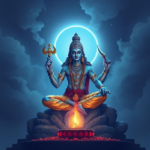 Maha Shivratri 2025: Date, Time, and Significance
Maha Shivratri 2025: Date, Time, and Significance
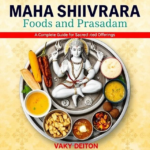 Maha Shivratri Foods and Prasadam: A Complete Guide to Sacred Offerings and Vrat-Friendly Recipes
Maha Shivratri Foods and Prasadam: A Complete Guide to Sacred Offerings and Vrat-Friendly Recipes
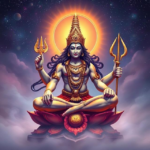 Astrological Significance of Maha Shivratri and Its Impact on Your Life
Astrological Significance of Maha Shivratri and Its Impact on Your Life
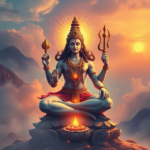 Maha Shivratri and Its Connection with Yoga and Meditation
Maha Shivratri and Its Connection with Yoga and Meditation
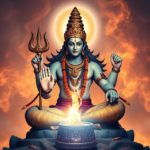 Mahashivratri: A Festival of Spiritual Awakening
Mahashivratri: A Festival of Spiritual Awakening
 Nag Panchami 2023: Date, Puja Time, Rituals And Significance
Nag Panchami 2023: Date, Puja Time, Rituals And Significance
